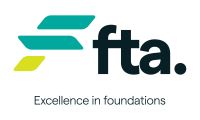11 November 2022
The Managing the Risk of Psychosocial Hazards at Work Code of Practice, and the Managing Respirable Crystalline Silica Dust Exposure in Construction and the Manufacturing of Construction Elements Code of Practice, are now available on the WorkSafe Queensland website.
Managing the Risk of Psychosocial Hazards at Work Code of Practice
The new psychosocial hazards code requires businesses to ensure that psychosocial hazards at work are effectively managed. This includes ensuring the health and safety of workers from harmful acts from third parties, such as clients or visitors.
The code provides a practical guide on how a business can meet its obligations, including:
- identifying hazards
- assessing risks
- selecting control measures
- maintaining and reviewing control measures, and
- responding to complaints, incidents or reports of psychosocial hazards at work.
This new code follows changes made to the WHS Regulations in October. It now includes a definition of psychosocial hazards and risks, an express duty to manage those risks, and requirements on deciding control measures to manage psychosocial risks.
This code is similar to but longer than, the national model WHS Code on psychosocial hazards which was finalised in August 2022.
It includes case studies on selecting effective controls for psychosocial hazards and risks like:
- Role overload
- Emotional work demands
- Challenging work hours
- Poor support
- Job control
- Low reward and recognition, and
- Poor workplace relationships.
The code will commence on 1 April 2023. Master Builders will hold briefings and formal training on the new code from early 2023. We’ll help you to meet your obligations with practical advice and resources, including psychosocial risk assessments and other tools.
Managing Respirable Crystalline Silica Dust Exposure in Construction and the Manufacturing of Construction Elements Code of Practice
The new silica code applies to construction work as well as the manufacturing of materials, such as bricks, blocks, tiles, mortar and concrete. The code establishes minimum, enforceable standards for duty holders in the construction industry and in manufacturing.
These include:
- Using water suppression and other methods to prevent silica dust from being generated or released into the air
- Using appropriate respiratory protective equipment
- Using exposure data from air monitoring to check whether dust controls are effective
- Providing health monitoring to at-risk workers, with clearly defined triggers for testing based on risk levels, and
- Consulting with workers when identifying silica risks and controls.
The code will commence on 1 May 2023.
Silica Awareness Training Course
Master Builders has a Silica Awareness Course available. It’s suitable for anyone who needs to manage a work environment where people could be exposed to respirable crystalline silica including concrete, tiles, block, and stone.
The course, which runs for four hours and is interactive, will help to:
- Ensure you meet your legal obligations
- Explain where silica can be found,
- Explain what control measures can be used to manage the risks
- Demonstrate how to perform air monitoring, and
- Help you to develop a Safe Work Method Statement (SWMS) for working with silica.'
More information
Contact the WHS team on 1300 30 50 10 for more information about these changes, or to get advice about your specific business needs.





